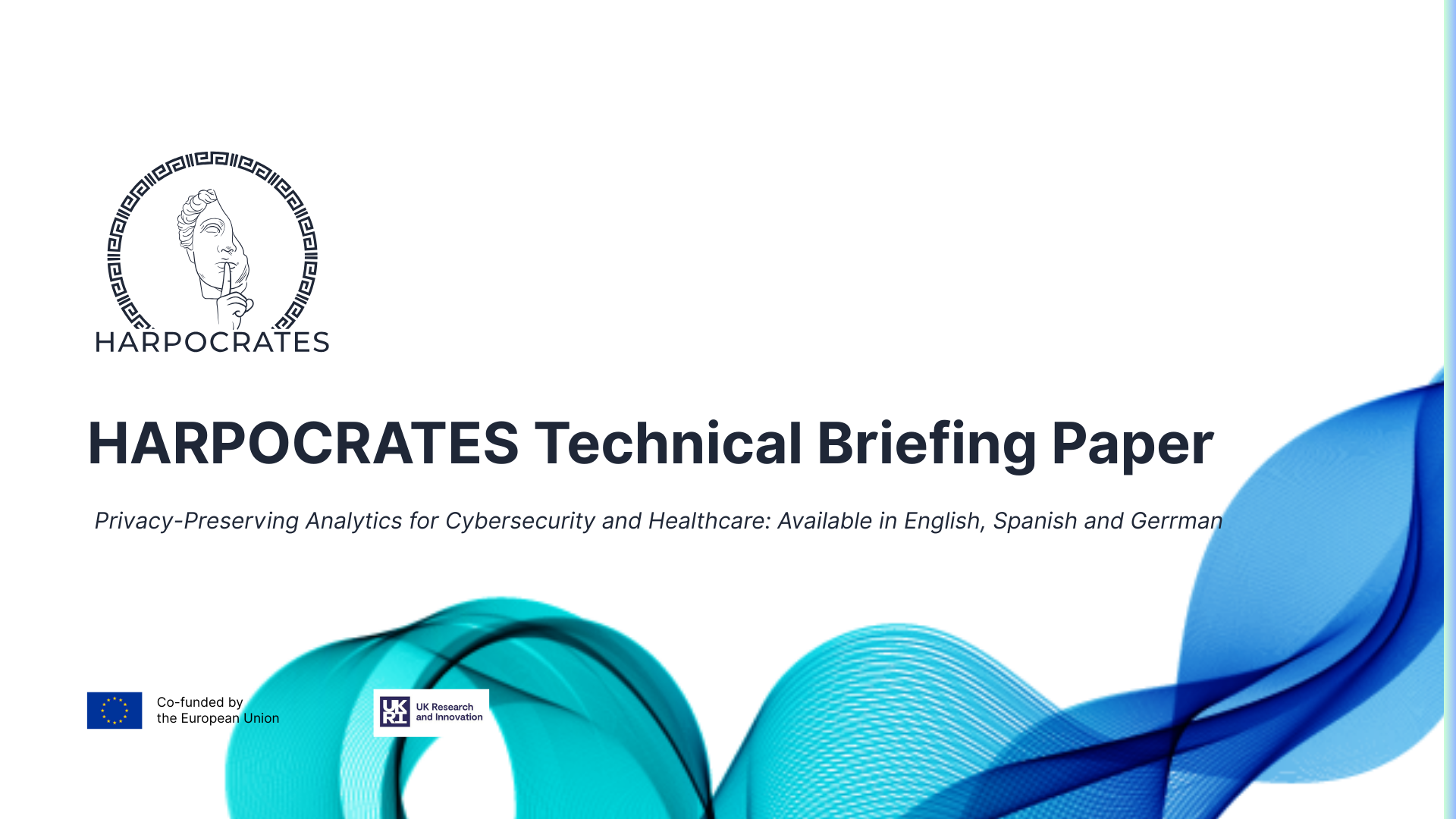
The HARPOCRATES project has published a Technical Brief Paper that provides an accessible overview of the project’s approach to privacy-preserving data analysis and secure artificial intelligence. The paper is intended for stakeholders across research, industry, and healthcare who are interested in understanding the practical applications of confidential computing and privacy-enhancing technologies.
The brief introduces the motivation behind HARPOCRATES, highlighting the challenges organisations face when sharing and analysing sensitive data across borders or sectors. It explains how current practices often limit collaboration due to legal, ethical, and security concerns, and sets out how HARPOCRATES addresses these barriers through advanced cryptographic methods and federated learning techniques.
Key topics covered in the paper include:
-
Privacy-preserving machine learning: how HARPOCRATES applies functional and homomorphic encryption to enable training and analysis without exposing raw data.
-
Federated and distributed AI: the project’s approach to collaborative learning across institutions without centralising data.
-
Demonstrator use cases: examples from healthcare (sleep medicine) and cybersecurity (threat intelligence sharing) that show how the technologies are applied in practice.
-
Compliance and usability: the importance of GDPR alignment and modular design to make the solutions adaptable and practical for adoption.
The paper also situates HARPOCRATES within the broader European research context, noting the importance of privacy-by-design approaches for building trust in digital services.
To increase accessibility, the Technical Brief Paper has been translated into German and Spanish, reflecting the locations of the project’s demonstrator partners and supporting outreach to wider stakeholder communities.
This brief complements the project’s broader set of deliverables and dissemination materials, serving as a concise reference point for understanding HARPOCRATES results and their relevance to real-world applications.
